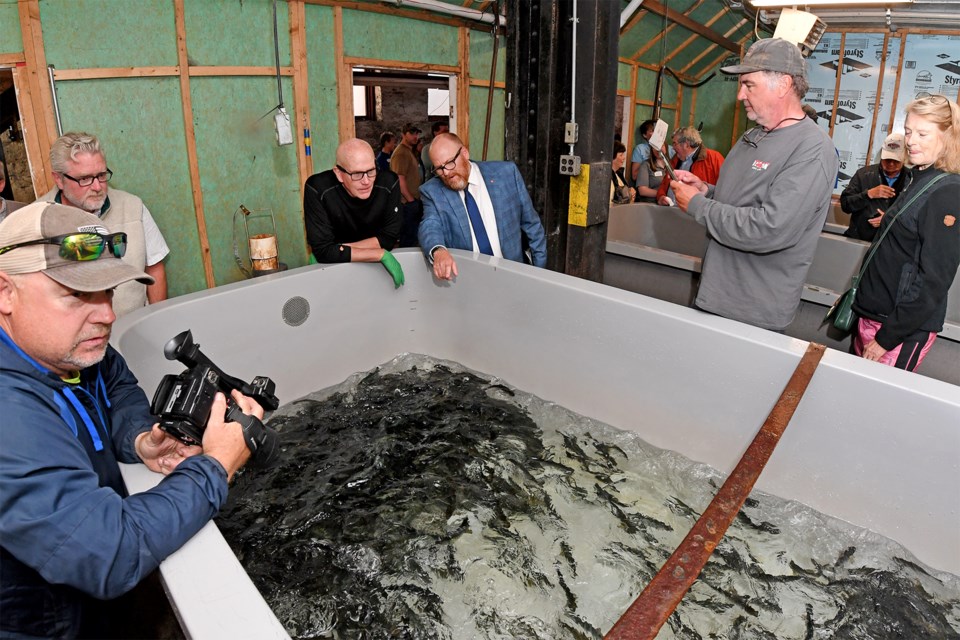Twenty-seven thousand Atlantic salmon were released from a spawning hatchery into the St. Mary’s River this week. The release honored Martin Vanderpleog for giving a million dollars to Lake Superior State University’s Center for Freshwater Research and Education (CFRE).
The donation will go towards research and education about Atlantic salmon and an endowed position in the faculty.
“I’ve been fishing LSSU Atlantic salmon for decades,” said Vanderpleog after he helped turn the salmon loose from holding tanks called raceways. “LSSU has created a unique fishery on the upper Great Lakes, and with the new CFRE is establishing a world-class research facility I’m proud to help grow.”
Highly prized around the world for their sporting characteristics, Atlantic salmon are currently thriving in the St. Marys River, the connecting waterway that drains Lake Superior and flows into Lake Huron.
Despite several false starts - Atlantics are delicate fish, vulnerable to disease and environmental constraints - Lake Superior State University's hatchery program saw the first returns in 1990 and soon began taking eggs from the returning salmon. By 2004, it began using only St. Marys River Atlantics for fertilizing eggs and raising fish for release.
Atlantic salmon released by the lab are always marked with clipped pectoral or ventral fins. The pectoral fins are just behind the gills on the left and right side of the body. The ventral fins are lower, off the belly of the fish and farther back on the body, about mid-way between the head and tail.
Anglers are encouraged to bring their fish in for examination at the lab, located in the Cloverland Electric Company power plant on the St. Marys River in Sault Ste. Marie, Mich. The hatchery shares a drive with LSSU’s brand new Center for Freshwater Research and Education.
For Vanderpleog, his donation – made in the memory of his father, Marvin – represents a lifestyle he continues to foster.
“This program lets students and young people reconnect to the natural world,” he said. “Today’s technology puts everything at our fingertips. We can’t let that come at the expense of personal experience. The work CFRE and this hatchery does keeps our passion for the outdoors alive.”



